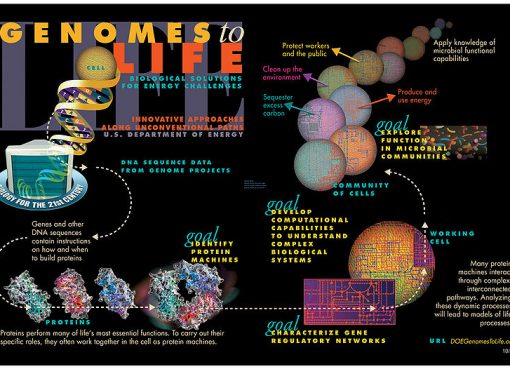The food can be defined as that which is eaten, drunk or absorbed for the growth of the body and maintenance of life. Hippocrates said ‘Let the Food be our Medicine.’
In the coming paragraphs, the medicinal value of some plants is described.
Amla (Gooseberry) Emblica myrobalan:
It is one of the most extensively used fruits. It is rich in Vitamin C and has more Vitamin C than lemon and grapes. Its antioxidants protect its Vitamins even after drying. It has cellulose, gallic acid, tannin, albumen and various minerals. It prevents urinary disease and gynecological problems. It hastens bone formation during fractures and cures dental problems. Tea made from Amla leaves and fenugreek seed cures dysentery. Amla is good for stomach, increases appetite and removes constipation. It prevents most of the eye diseases and improves eyesight, memory and heart functions.
Banana (‘Kol’) (Plantain) Musa paradisica
Banana is a rich source of Potassium, Phosphorus, Sulphur, Calcium, Magnesium, Iron, Copper, Iodine, and Vitamins A, B, C and E. Banana kills many harmful bacteria of the intestine and checks their proliferation. It has lot of soluble fibers. Juice of banana trunk is good in destroying bacteria. Potassium present in banana helps in controlling blood pressure; corrects the twitching electrolytic imbalance and keeps the body muscles in tone. Flour of green unripe banana is good for stomach ulcer. Banana is the best, if taken in the morning. Unripe and over ripen banana should never be taken.
Beet root (Beta bulgaris):
It is a good source of Sodium, Calcium, Potassium and Chlorine. Beet roots are good for liver and kidney, as it has cleansing effect in these organs. Beet root regulates menstruation and the nervous system. Beet root is valuable to cure urinary disorder but it should be avoided by diabetic patients.
Cabbage (Bandha Kobi) (Brassica oleracea):
It belongs to the family Cruciferae, which consists of other vegetables like radish, turnip, mustard and broccoli, and shares common chemicals that are believed to counteract the cancerous chemicals in the body to a great extent. It acts as a cleansing agent due to its high content of sulphur, iodine and chlorine. Cabbage juice helps in healing stomach ulcer; it cleanses the intestinal tract and blood. Outer loose leaves of cabbage are more potent than central one for this purpose. By destroying bacteria and viruses, it corrects the immune system, and adds to the growth factor. Cabbage juice even in cooked state is valuable to strengthen alkali reserve in the body. Red cabbage juice is useful in Asthma, Bronchitis and Chronic cough.
Carrot (Daucus carota)
Carrot is a rich source of vitamin A and one of the finest alkalizers with lots of potassium, calcium, phosphorus, sulphur and sodium. The beta carotene pigment present in carrot is of special importance. On boiling carrot, its potassium content is reduced to one third, and iron reduces it to one half along with other minerals. Upon cooking, beta carotene increases almost three times and becomes more digestible. Beta carotene is extremely important for its anticancer effect. Carrot has soothing as well as healing effect, and nourishes the optic system. If taken with milk, it acts as a tonic and tends to reduce the hazards of infection in child birth. It helps in semen production and makes it thick. Raw carrot juice is a natural solvent for ulcerous and cancerous factors. However, if carrots are processed as halwa, most of its good properties are lost.
Lettuce (Choka Shak) (Lactuca sativa)
Lettuce is a live food. It has four major vitamins, viz., A, B, C and E. It has high chlorophyll content and less than 3% of carbohydrates; hence it is very good for diabetics. Lettuce is good for anemia, acidosis, insomnia, urinary problems and obesity. It also has laxative as well as diuretic effect, and stimulates blood circulation. Its juice is very good for the nervous system. Lettuce has a low food value but huge health value.
Fenugreek (Methi) (Trigonella foenum graecum)
Fenugreek leaves are very rich in Iron, Calcium, Sulphur, Chlorine, Vitamins A & C. It is highly alkaline with aromatic bitterness and is good for digestion. Due to high sulphur and chlorine content, fenugreek leaves have a cleansing effect. Fenugreek seeds are useful for patients with anaemia, gout and diabetes. Tea prepared from its roosted, powered seeds give cooling effect.
Pepper (Jaluk) (Piper nigrum)
Both green and dry pepper is higher in potassium, calcium, iron, phosphorus and carotene. It gives special fragrance and flavour. It should be used moderately. If used more, it can cause ulcer on the tongue and intestine. Black pepper acts as an anti-depressant and antioxidant, and helps in lowering cholesterol level to a great extent.
Garlic (Naharu) (Allium Sativum)
Garlic is good for lowering down blood cholesterol, improving HDL/LDL ratio, as well as for increasing blood circulation. Garlic has antibacterial and antifungal properties because of its allyl disulphate content. Garlic vapor keeps the germs at a distance of 25 centimeter and its germs killing power remains potent in blood stream for about 12 hours. Researchers have shown that when garlic extract is mixed, bacteria get withered, become unproductive and die. Patients with piles and dysentery should use garlic only on medical advice. With these exceptions, garlic can be used by all to cure many health problems, such as arthritis, asthma, bronchitis, common cold, cholera, diabetes, hyper tension, jaundice, rheumatism, malaria, ring worm, scurvy, T.B. and typhoid. It is a tonic for sexual disability and impotency.
Ginger (Ada) (Zingeber officinale)
Indian, Chinese, Arab, and Greek physicians have used ginger as a medicine for hundreds of years. Ginger has a compound called gingerin and potassium oxylate in large quantities. Ginger is a potent anti-coagulant and is good for stomach disorder, especially in indigestion. Ginger slices with lemon juice have high digestive effect. It also has anti-flatulant, anthelmintic and anti-emetic effects.
Lemon (Citrus lemon)
Lemon is one of the best health promoting foods. “Lemon Taza” is Sudan’s national drinks. It cures a skin disease called scurvy. It is a very good source of Vitamin C. Both juice and lemon peels have antioxidant properties. It is claimed that if lemon and honey are taken with water, it can replace all the soft drinks of the world’, and half of the health problems of globe can be resolved automatically. Lemon juice destroys toxic substances of the body and kills disease-causing germs. It stimulates saliva and gastric juice secretions. Lemon juice with fresh coconut water is good for typhoid patients. Lemon juice and lemon peel in boiling water are good for urinary disorders. Lemon juice is very good for heart due to its huge potassium content. Use of lemon juice is, however, not recommended when the digestive tract is in an inflammatory condition.
“BE VEGETARIAN, THE BEST DIET OF BIOSPHERE”
Prepared By
NOVLEENA KONWAR
Ph.D. Scholar
Dept. of Agricultural Biotechnology
Assam Agricultural University, Jorhat
References:
1) http:/www.vuatkerela.org
2) Annual Review of Plant Biology
3) Botanical Journal of the Linnean Society




